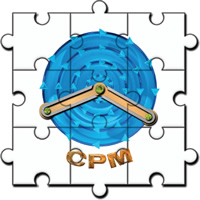The 2013 HME Handbook: CPM
Flexible, Considerate Therapy
How to ensure bariatric CPM patients gain optimal benefit from therapy.
 During the past 20 years, there has been a dramatic increase in obesity in the United States and rates remain high, according to the Centers for Disease Control and Prevention. Demand for bariatric products is expected keep rising.
During the past 20 years, there has been a dramatic increase in obesity in the United States and rates remain high, according to the Centers for Disease Control and Prevention. Demand for bariatric products is expected keep rising.
One growth opportunity for providers is in the availability of knee CPM (continuous passive motion) devices for bariatric patients. Doctors use CPMs to help patients regain their range of motion after a surgery that affects a joint. The larger, or oversized, patients have some unique issues that providers need to take note of to ensure their patients are gaining the optimal benefit from their therapy.
“(Bariatric knee CPMs) accommodate the residents with a larger thigh than the standard models that are in the market today,” explains Dave Nettesheim, an account executive with administrated care provider Invacare Outcomes Management. “It’s accommodating the larger population — I don’t want to say the bariatric because sometimes they’re not just bariatric, they’ve just got big thighs, but it helps prevent the rubbing or the pinching which can cause the skin breakdown.”
Nettesheim works with post-hospital patients in long-term care and nursing home facilities.
“That’s a big thing,” he says “I see a lot of patients that come out of hospitals that are bariatric patients and they show me the bruises on the sides of their leg, the soreness, and it’s only because they were never even set up into a bariatric. It was an improper set up.”
Some basic tips for set up and positioning of a bariatric patient include:
- Position the patient toward the head of the bed to accommodate the machine in bed.
- Use the correct softgoods with the exact amount of trough to accommodate the limb.
- A patient with a larger thigh needs enough tension so the thigh lays down into the machine, in order to prevent rubbing and pinching.
- To get the correct measurement of the patient for pad positioning, a provider should measure from the hip (center joint) to the knee and correspond those readings onto the machine.
- Stand at the foot end of the bed to make sure measurements are correct as well as to verify the correct positioning and alignment of both the patient and the machine.
Eliminating embarrassment
According to the Centers for Disease Control and Prevention, more than one-third of U.S. adults are obese, which is defined as a body mass index of 30 or higher. Many of these adults many fall into the morbidly obese category — with a BMI of 35 or higher. Though obesity is quite common, providers should take care not to offend their larger patients.
“Telling the patient that ‘Oh, you need a bariatric CPM,’ — that can set their mindset to not even having a good stay at the facility or ‘This machine is going to work against me now because he made a comment that I’m bariatric.’”
It is helpful if the doctor or health facility staff can eye up the patient and let the provider know in advance to bring in a bariatric machine or even give the weight of the patient ahead of time. In cases where a provider is unable to find out ahead of time what size CPM the patient needs, Nettesheim offers a tactful way to handle it:
“When I walk in to look at a patient, I will walk in and say ‘I have a CPM for you.’ I’ll say, ‘You know what? I have to go get one more part in the car,’ and that’s when I make a determination that I’m going to bring in a different CPM,” he explains. “Or I’ll have a standard CPM with me and say I’m going to get one more part out in the car, carry the machine out and bring in another machine, a larger one.”
One tricky situation can occur if a patient’s thigh is larger than what will even accommodate the bariatric knee CPM.
“Sometimes it’s more of an embarrassment to the patient when you go in there and their thigh is so big, it overhangs on the bariatric CPM,” says Nettesheim. “Then you have to take it to another level.”
He suggests taking the pads that typically get wrapped around the limb when the patient sits in the machine and using them to wrap the patient’s thigh to help bring in their excess weight and to help accommodate them.
“It can be a touchy situation. It’s an embarrassment to (the patient),” he says. “You’re in there to help them, to try to keep them comfortable, to strengthen their leg up, but if you can get it in there and spend a little time … you can make their stay more comfortable, which helps their healing process.”
Points to take away:
- Bariatric knee CPMs accommodate patients with additional width in thigh region as compared to the standard models.
- When bariatric patients use knee CPMs that are too small, it can lead to painful rubbing, pinching or skin breakdown.
- Try to find out in advance the patient’s weight or if a bariatric machine is needed to avoid embarrassing the patient by announcing the need a bariatric size.
Learn More:
- For an interesting history of the development of continuous passive motion by Canada’s Dr, R.B. Salter, CC, OOnt, MD, FRSC, FRCSC, FACS, of Sick Children’s Hospital in Toronto, and its commercialization by John Saringer and Toronto Medical Corp visit www.continuouspassivemotion.org
This article originally appeared in the June 2013 issue of HME Business.